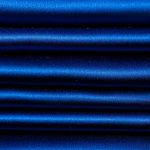Are you struggling to cut velvet fabric without ruining it? Don’t worry, we’ve got you covered!
In this article, we will guide you through the process of cutting velvet fabric, step by step. You’ll learn about the right tools to use, how to prepare the fabric, and the best techniques for cutting straight lines, curves, and angles.
Plus, we’ll share some tips to ensure a clean and precise cut every time.
Get ready to master the art of cutting velvet fabric like a pro!
Table of Contents
Choosing the Right Tools
You’ll need to make sure you have the right tools for cutting velvet fabric. When working with velvet, it is important to have a sharp pair of fabric shears. Regular scissors may cause the fabric to fray and ruin the smooth texture. Look for shears specifically designed for cutting fabrics, as they will have a finer point and sharper blades.
In addition to shears, having a sewing machine with the right settings is crucial. Choose a machine with a slow speed option, as velvet can be slippery and delicate. Adjust the tension and stitch length settings to accommodate the fabric weight. This will ensure that the stitches are secure and the fabric is not pulled or stretched during sewing.
When cutting velvet, it is also important to consider the fabric weight. Heavier velvet requires stronger shears and a more robust sewing machine. Lighter velvet can be cut with finer shears and a machine with less power. Take the time to test your tools on a small scrap of fabric to ensure they are suitable for the job.
Preparing the Fabric
Once the fabric is properly prepared, it’ll be easier to work with and achieve the desired results.
When it comes to cutting velvet fabric, there are a few techniques you can use to ensure clean and precise cuts.
First, make sure you have a sharp pair of fabric scissors. Dull scissors can cause the fabric to fray and create messy edges.
Next, lay the fabric on a flat surface and smooth out any wrinkles or creases. This will help prevent the fabric from shifting or bunching up while you’re cutting.
To avoid fraying, consider using a rotary cutter with a sharp blade. This tool allows for more control and reduces the risk of pulling or stretching the fabric.
If you prefer using scissors, try using pinking shears. The zigzag pattern of their blades can help minimize fraying.
Additionally, you can also apply a thin layer of fray check or fabric glue along the edges to further prevent fraying.
Marking the Cutting Lines
To ensure precise cuts, it’s important to mark the cutting lines on your fabric. This step is crucial in avoiding fabric fraying and preventing fabric stretching. Before you begin, make sure you have a sharp fabric marker or tailor’s chalk handy.
Gently unfold your velvet fabric and lay it flat on a clean, smooth surface. Smooth out any wrinkles or creases to ensure accurate marking.
Start by identifying the areas where you need to cut. Use a ruler or measuring tape to measure and mark the desired dimensions on the fabric. Be cautious not to press too hard or pull the fabric while marking, as this can cause stretching.
When marking, it’s essential to use light strokes to prevent any damage or indentation on the fabric. Remember to mark on the wrong side of the fabric to avoid any visible lines or marks on the finished garment.
To ensure precision, double-check your measurements and markings before proceeding to cut. This will help you avoid any costly mistakes or wasted fabric.
Using Scissors Vs. a Rotary Cutter
Using scissors provides more control over the cutting process, allowing for precision when cutting intricate shapes and curves. Scissors can easily follow pattern lines accurately. On the other hand, a rotary cutter may not be as precise, especially when cutting curves.
When it comes to cutting straight lines, a rotary cutter is a game-changer in terms of speed. Its sharp, circular blade glides effortlessly through the fabric, saving time and effort. Scissors, however, require more manual effort and may take longer, especially with large pieces of fabric.
Both scissors and rotary cutters can contribute to fraying, which is a common issue with velvet fabric. To prevent fraying, pinking shears with scissors or a rotary cutter with a pinking blade can be used. These specialized tools create zigzag edges that help minimize fraying.
Scissors offer greater control over the cutting process, allowing for small adjustments and corrections as needed. This level of control is especially important when working with delicate or intricate designs. A rotary cutter, while faster, may not provide the same level of control, making it more suitable for straight-line cuts.
Cutting Straight Lines
The rotary cutter’s sharp blade effortlessly glides through the fabric, making it ideal for cutting straight lines. When cutting velvet fabric, it is important to use a rotary cutter to avoid frayed edges and prevent fabric stretching.
Start by laying your fabric flat on a cutting mat. Measure and mark the desired length with a fabric pen or chalk. Hold the ruler firmly against the fabric, using it as a guide for the rotary cutter. Apply gentle pressure and let the cutter do the work, smoothly cutting through the fabric.
To avoid frayed edges, make sure the blade is sharp and replace it if needed. Take your time and cut slowly to ensure accuracy. When cutting long lines, it may be helpful to use a longer ruler or a yardstick to maintain a straight line. Remember to always be cautious and keep your fingers away from the cutting path.
Cutting Curves and Angles
When cutting curves and angles, remember to go slow and use a steady hand with the rotary cutter. Cutting velvet fabric can be tricky, but with the right technique, you can achieve smooth edges and avoid common mistakes. Here are some tips to help you:
-
Use sharp tools: A dull rotary cutter can cause the fabric to snag and fray. Make sure to use a sharp blade to get clean cuts.
-
Pin the fabric: To prevent the velvet from shifting or stretching, pin it securely before cutting. This will help maintain the shape and prevent any distortion.
-
Mark the fabric: Before cutting, mark the curves and angles on the fabric using tailor’s chalk or water-soluble markers. This will serve as a guide and help you cut accurately.
-
Cut in small sections: Instead of trying to cut the entire curve or angle in one go, cut it in smaller sections. This will give you more control and reduce the risk of making mistakes.
Dealing With Pile Shifting
To prevent pile shifting, make sure you secure the fabric with pins before cutting. Velvet fabric is prone to pile shifting, where the fibers move and shift during the cutting process, resulting in an uneven appearance. To prevent this, start by placing your velvet fabric on a flat, clean surface and smooth out any wrinkles. Then, carefully pin the fabric in place, making sure to insert the pins perpendicular to the fabric to avoid distorting the pile.
When cutting velvet fabric, it is important to handle its stretchiness. Velvet has a tendency to stretch and distort, so it’s crucial to use sharp fabric scissors and cut with a smooth, steady motion. Avoid pulling or tugging on the fabric as you cut, as this can cause uneven edges and fraying.
To further prevent fraying, you can consider using a rotary cutter with a sharp blade. This will allow for cleaner cuts and minimize the risk of frayed edges. Additionally, you can apply a fabric stabilizer or a fusible interfacing to the back of your velvet fabric before cutting. This will help to stabilize the fibers and prevent fraying.
Tips for a Clean and Precise Cut
Using sharp scissors and a steady hand, you can achieve clean and precise cuts on velvet fabric. To ensure a successful cut, follow these tips:
-
Choose the right scissors: Opt for a pair of sharp fabric scissors specifically designed for cutting delicate materials like velvet. Avoid using dull or serrated scissors that can cause fraying edges.
-
Mark your cut: Before starting, mark the cutting line on the fabric using tailor’s chalk or washable fabric markers. This will help you maintain accuracy and prevent any mistakes.
-
Hold the fabric taut: When cutting velvet, it’s important to keep the fabric taut to prevent any shifting or snagging. Hold the fabric firmly with your non-dominant hand, keeping it flat and smooth.
-
Cut in one smooth motion: With your dominant hand, make a clean and precise cut along the marked line. Avoid stopping and starting, as this can lead to frayed edges. Instead, maintain a steady and continuous motion throughout the cut.
Conclusion
So there you have it! Cutting velvet fabric may seem like a daunting task, but with the right tools and techniques, it can be done with ease.
Make sure to choose the appropriate tools, prepare the fabric properly, and mark your cutting lines accurately. Whether you prefer using scissors or a rotary cutter, remember to cut straight lines and be careful when cutting curves and angles.
Lastly, be mindful of pile shifting and always strive for a clean and precise cut. With these tips, you’ll be able to cut velvet fabric like a pro!
- Glass-Aramid Fibre Fabric in India: A Sourcing Guide - June 23, 2025
- The Benefits of Flame Retardant Aramid Fabric - June 23, 2025
- Fabric Made From Para-Aramid: A Technical Explainer - June 23, 2025




